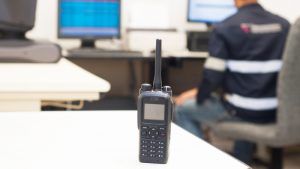The National Institute of Standards and Technology announced a $30 million grant for broadband technology research and development for first responders.
Fayetteville, N.C., is turning to an online app to monitor the performance of the city’s services and programs. TRACStat, a new publicly available application, will report key performance indicators, such as performance data, budget and financial data, and updates for strategic projects across the city. The new app is replacing semiannual printed reports or static documents posted on a website.
The state of Michigan would not be able to recover its information systems or sustain its businesses processes if it were hit by a cyberattack, according to Michigan’s auditor general.
The Department of Health and Human Services’ Office of the National Coordinator for Health Information Technology on Dec. 13 hosted a live demonstration of patient applications that import data from health IT vendors. These apps give patients access to a consolidated list of their medications from a variety of sources.
The California secretary of state has improved access to more than 5.3 million records related to corporations, limited liability companies, and limited partnerships through the creation of a new Business Search Tool, which allows citizens to have online access to data that was previously available only through in-person or mail requests.
With a rise in public mistrust of police forces in cities across the country, many police departments have been refocusing their efforts on community policing to re-establish public trust.
On the same day as the first snow of the season, the city of Seattle announced its “Let It Snow!” hackathon. The city is hoping to tap technology users, designers, and developers for a community design workshop on how city officials communicate with the public during snow-related emergencies.
Calls for government transparency are increasing as citizens want to know exactly what information governments have and how governments are spending taxpayer money. Cincinnati has taken these calls to heart and has invested roughly six months and $55,000 into 15 new dashboards that help educate and inform citizens.
The National Institute on Alcohol Abuse and Alcoholism, a division of the National Institutes of Health, just launched a competition for wearable devices capable of measuring blood alcohol in near-real time. The device ideally would be able to measure alcohol in the blood or fluid from the body’s cells, instead of the existing technology that measures alcohol via sweat.
California has budgeted $3 million to analyze high-resolution aerial images of 410 urban water suppliers’ areas throughout the state. Water regulators will combine data from those images with data on climate, as well as other factors, to assist state officials in calculating new community-specific conservation targets.














